
Photometry and Turbidity
Photometers are universal measuring tools that are used for everything from research and teaching to environmental and process monitoring. In the environmental sector, for example, they are used to monitor surface and groundwater. In quality control, they are used in the food and beverage industry as well as in drinking water production. The proven and highly precise WTW® photometers can be used for a wide range of these applications. The reason for this is the large selection of commercial test kits, as well as reagent-free methods and the possibility of colour measurement.
The devices in the photoLab® series are also capable of performing the tasks required in research and service laboratories, such as scans, kinetic and multi-wavelength measurements or complex multi-step analyses.
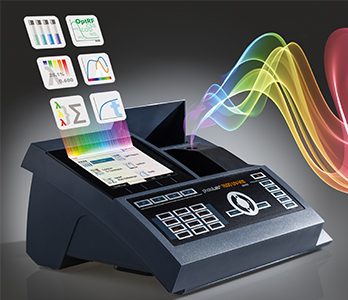
The photoLab® 7600 UV-VIS spectrophotometer adds reagent-free COD, nitrate and nitrite measurement via OptRF to the comprehensive range of proven routine measurements. It can also determine important parameters such as UVT and SAC and carry out extensive colour measurements. As lightweight devices, the photoLab® series can also be used on the move with a car battery.
The robust and intuitive photometers in the photoFlex® series are particularly impressive in the field. From the simple photometer to the "Swiss army knife", which combines 4 devices in one multi-parameter device, these are ideal for all applications that require mobility and versatility.
Turbidity is a subjective, optical impression and therefore not as clearly determinable as the photometric parameters, for example, but rather an effect caused by the scattering and absorption of light. Nevertheless, turbidity has proven to be an important parameter for quality assessment and control. Turbidity measurement has long been used worldwide in drinking water to determine quality for human consumption. A standardised measurement method for reliable quantification has been developed for this purpose: The measurement method used today in drinking water with a scattered light measurement of 90° is known as nephelometric turbidity measurement and is described in the two standards DIN EN ISO 7027-1 and US EPA 180.1. However, methods of turbidity measurement have also been established in the medical/pharmaceutical sector and in food production, e.g. to monitor production processes or shelf life. In wastewater treatment, turbidity measurement is used as an indicator for mass loading.
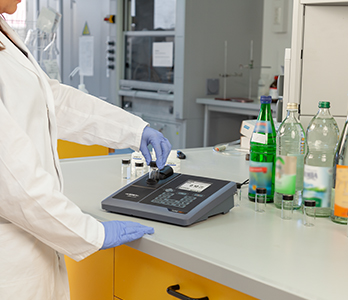
Xylem Analytics offers proven, high-precision WTW turbidimeters for the various applications of turbidity measurement. From quality monitoring in the laboratory to environmental monitoring in the field.
The WTW Turb® 750 IR and Turb® 750 T fulfil the requirements of many laboratory and industrial applications for AQA-supported turbidity measurement. With the help of the Intelligent Reproducibility and Plausibility Check (IRPC), they deliver highly precise measurement results. Low space requirements, an excellent range of functions and an unbeatable price/performance ratio make the Turb® 750 series the ideal measuring instruments for every laboratory.
Our top products:
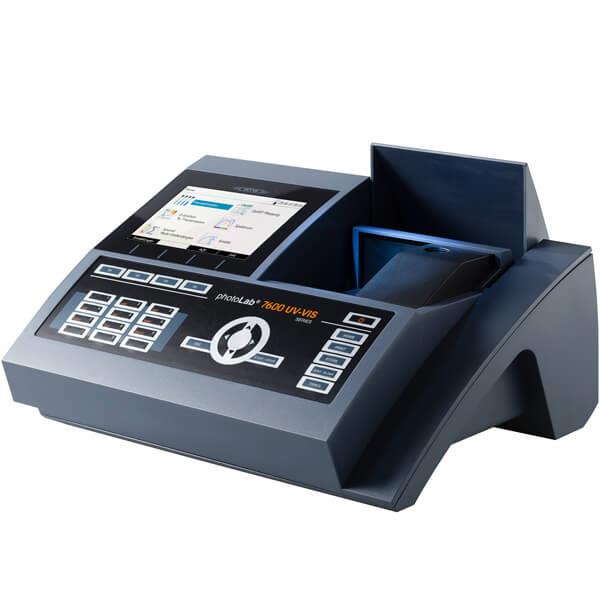
Spectrophotometer photoLab® 7600 UV-VIS
The spectrophotometer photoLab® 7600 UV-VIS offers the universal use from well-proven routine analysis to spectral analysis with pioneering procedure OptRF for reagent-free measurement of COD, Nitrate and Nitrite. Furthermore, important parameters such as UVT and SAC as well as comprehensive color measurement are supported. Being light-weighted and optionally powered by standard car battery, photoLab® 7600 UV-VIS can be operated On-site easily.
Highlights:
- OptRF for standard parameters COD, NO3, NO2 in the outlet of sewage plants
- Menu-guided operation
- Multi-step AQA
- Application support from chlorophyll to wine
- Comprehensive programming opportunities
More infos about the 7600 UV/VIS
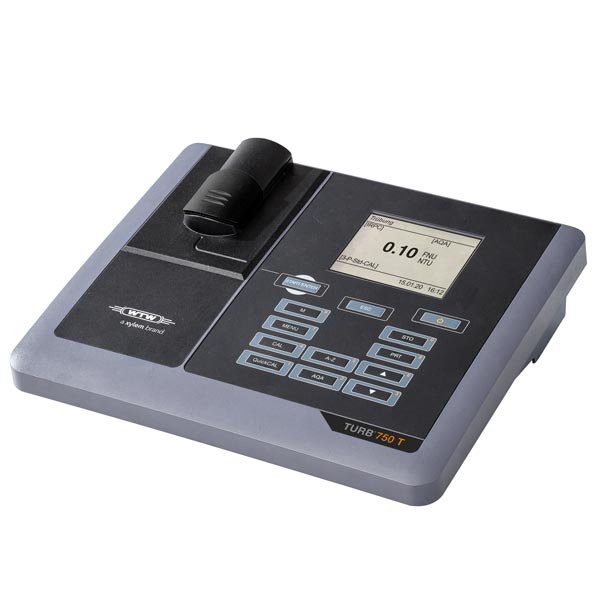
Turbidimeter Turb® 750 T
WTW Turb® 750 T fulfills the demands of many lab and industrial applications for an AQA supported turbidity measurement up to 1100 FNU/NTU. With the Intelligent Reproducibility and Plausibility-Check (IRPC) reliable findings are proven. Measurement conforming to standards in drinking water, lab and industrial applications. WTW Turb® 750 T measures nephelometrically according to US EPA 180.1 up to 1100 NTU/FNU with AQA support and PC documentation:
Highlights:
- Well proven WTW® optics with fast data output
- Multiple measurement and data evaluation with Intelligent Reproducibility and Plausibility Check (IRPC)
- Bench-saving despite comprehensive functionality
- Invincible price-/performance ratio
More info about the Turb 750 T
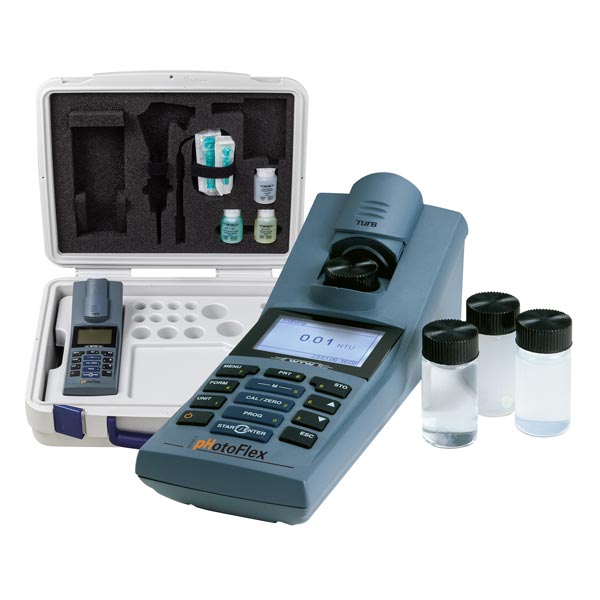
Photometer pHotoFlex® Turb
pHotoFlex® Turb is the "real" multi-parameter photometer with pH/redox and turbidity measurement. The "original" photometer with 6 wavelengths, full-fledged electrochemical pH, redox and standard-compliant turbidity measurement (IR) for water analysis , environmental monitoring, fish farming, serial examinations and service labs with QC. In addition to the individual device, there is a case set with an integrated laboratory table, accessories and GLP-compliant data management.
Highlights:
- Over 180 methods for standard parameters, CO2, NH3
- Unique combination with pH and turbidity measurement
- Turbidity measurement from 0.01-1100 NTU according to DIN ISO 27027
- Robust and energy-saving for on the go with sample ID
pHotoFlex® Turb
You can read more about photometry from our experts in our blog::
Blog: The Basics of Photometric Measurement